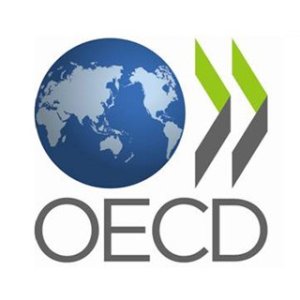Increasing Access Through New Financial Models

STORY INLINE POST
Q: What new alliances is AMIIF developing to promote access to innovative medicines in Mexico?
A: The association has done significant work in creating alliances with other business groups in the country while also joining business councils like COPARMEX and CONCAMIN. In December 2017, AMIIF signed an agreement with the Government of Queretaro that will address access to market.
This agreement has three goals. The first is the generation of data on the impact of health on productivity and competitiveness in the state, following the line of work we did in the Automotive Cluster of Guanajuato. The second is to foster R&D and clinical research investment in the state. To achieve this, Queretaro is now analyzing its capabilities in terms of researchers and research units. The third is to generate innovative access models so public institutions can increase the services they provide.
The agreement with the Government of Queretaro came after many meetings to understand the state’s vision for the industry. Once the objectives were established, we formed a working group to determine how to measure the state’s productivity. We have also signed similar agreements with the Autonomous University of Nuevo Leon (UANL) and in 2018 we hope to incorporate one or two more states through similar agreements. We are looking for states that are willing to prioritize healthcare and bet on clinical research, innovative payment models and competitiveness. So far, Morelos and the State of Mexico have contacted us.
Q: What are the main areas of opportunity when introducing these models into the public sector?
A: Within AMIIF, we noticed that access to innovation remains below 10 percent. Innovative medicines have many positive benefits, but patients must have access. We are promoting a new payment model wherein institutions would pay for positive results instead of units, which would require the monitoring of the patient’s condition throughout treatment and an accurate diagnosis of the outcome
IMSS has been extremely welcoming and the institute is greatly interested in incorporating these new models. Once this agreement is finalized, we will document it and try to implement it in other public institutions. Some years ago, the industry was completely unwilling to discuss new payment models, but it is increasingly welcoming these as a strategy to address the lack of access to medications. Now that the industry is willing to adopt these models, the challenge will be properly monitoring patients to measure the results.
Q: What role will technology play in measuring the outcomes?
A: We need public institutions to define the type of information they need to measure results. Once we have that, we can determine the areas to measure. Potential measuring strategies might involve wearables or phone calls, but this will completely depend on each agreement. Once institutions are ready to incorporate the model, pharmaceuticals will have to analyze how to provide them with an integral solution, for instance by allying with technology providers. Global pharmaceutical companies have invested significantly in technology and have created many international partnerships so they may be well-positioned to monitor patients in Mexico.
These payment models are already being used in Mexico but in a very limited fashion. It will take approximately two more years for them to be truly relevant in the market. The main barrier is to develop and implement a way to measure success, which is very important. Mexico is a pioneer in the incorporation of these models in Latin America.
Q: How will the incorporation of the monitoring technology be financed?
A: While the expense may seem large at the beginning, once the agreements are finalized it will be justified because the result will be the development of predictable models for medical care. Also, the information generated and collected can be applied to other areas of medical care. AMIIF only tracks how many prescriptions have been issued, but we have no data on how many patients are following the treatment. If patients are not under controlled conditions, treatment costs can rise exponentially.
Q: How can these models be used to finance payments in the private sector?
A: While COFEPRIS has made innovative molecules available for purchase in Mexico, there is little access to these medications at private institutions because insurance penetration remains low. We have discussed strategies with AMIS to help pharmaceuticals get closer to insurers so that together they can develop new models to improve access.
Q: How is the Mexican pharmaceutical sector adapting to technological changes?
A: New companies entering Mexico will have a deep impact on the existing pharmaceutical environment and redefine the rules of the game. AMIIF’s agenda is now beginning to incorporate digital health as we are certain that this area will play a significant role in the future. Our agenda for this year mentions digital health without too many details. We are still analyzing the impact that digital health could have on the sector and generating a preventive strategy to adapt.
In 2018, we will focus on identifying and speaking with the new players entering the sector to determine which areas will change. This will not be easy as the industry fears change. For instance, it took many years for AMIIF to incorporate ACROM and CROs. AMIIF is analyzing how to create a forum to give players a voice and to catalyze new agreements. We participated in the First Week of Digital Innovation and we are trying to create an innovation week that incorporates all players in the healthcare sector.
Q: How are AMIIF’s companies adapting to the uncertainty created by the renegotiation of Mexico’s trade agreements?
A: All industry members are closely following the modernization of NAFTA with full understanding of its complexity. Furthermore, the industry is looking beyond NAFTA to other agreements, such as the TPP11. AMIIF companies have been operating in Mexico for 80 years and the strategies they are incorporating now were developed in the early 2000s. The strategies developed today will come into effect in the next 15 years, since it takes a long time to develop new molecules and to receiveapproval.Thesectorfocusesonmidtolong-term strategies rather than short-term considerations. Mexico is very attractive for the pharmaceutical sector due to its large population and many trade agreements.
AMIIF follows a long-term plan that we began implementing four years ago and we are only now seeing results. We will follow this plan until 2024. It is not possible to advance quickly in this sector as it moves slowly. Both private companies and governments need to understand this.
Q: What is AMIIF’s strategy to increase the competitiveness of the pharmaceutical sector?
A: Our strategy rests on three axes. The first is to measure the value of pharmaceutical innovation. The second is making healthcare a priority for the country by creating awareness of its direct relationship to productivity and competitiveness. The third is developing strategies in which the pharmaceutical sector can contribute to the country’s finances. We are analyzing how finances can be improved to give the public healthcare sector more resources by allying with the private sphere. There is a large opportunity to use the latter to increase resources in the public arena.
Q: What other areas are priorities for AMIIF?
A: We are targeting clinical research because processes must be improved to make approval times competitive with other countries. This area has improved significantly and many players, including COFEPRIS, ProMéxico, CONBIOETICA, ISSSTE, IMSS, federal hospitals, national institutes of health and many companies are working to shorten approval times even more. All the industry groups we have met with agree that this is a priority area to attract investment to Mexico.
A significant project in which AMIIF is participating addresses antimicrobial resistance, a critical area that is expected to cause 10 million deaths by 2050. AMIIF has joined an alliance that brings together companies from 100 countries, including the pharmaceuticals, generics and medical devices segments. The pharmaceutical industry is taking a leading role in the prevention of bacterial resistance and has invested about US$2 billion to date. While the industry is extremely invested, it needs the support of governments and other players to address this looming problem.






















